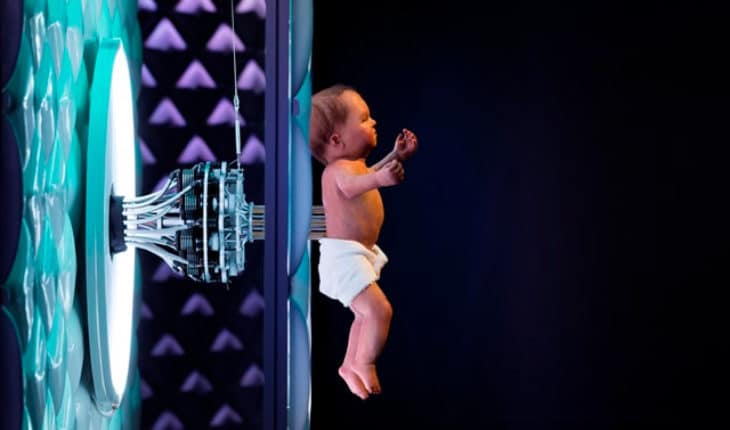Rebecca Wallersteiner meets 100 Robots at the Science Museum’s major new exhibition which explores humanities 500 year quest to recreate ourselves in mechanized form.
How long ago do you think the first robot was made? 50 years ago? 50? 100? Think again.
How long ago do you think the first robot was made? 50 years ago? 50? 100? Think again. In reality the history of robots goes back at least 500 years. ‘Robots’ – A mind-bending, major, new, interactive exhibition at the Science Museum features one hundred robots to explore humanities 500 year quest to recreate ourselves as automatons – which has obsessed the most brilliant human brains in history. In 1515 Leonardo da Vinci, who experimented with science and engineering as well as art, invented a robot knight with pulleys in Milan. Another brilliant, somewhat eccentric inventor in early 17th Germany invented a creepy, robot spider which has been crawling around, terrifying people for over four centuries.
Ian Blatchford, Director of the Science Museum Group comments, “Visitors to Robots will see the greatest collection of humanoids ever assembled. On display are over one hundred robots, from a 16th-century mechanical monk to robots from science fiction and modern-day research labs. The exhibition explores the fascinating question of why, rather than how, we build robots. To look through the eyes of those who built, commissioned or gazed upon these mesmerising mechanical creations over the past 500 years, reveals so much about humanity’s hopes, fears, dreams and delusions.’ The first robot visitors to the exhibition will encounter is an incredibly life-like mechanical human baby, recently acquired for the Museum’s new robotics collection. Usually made for use on film sets, this baby has no intelligence, making only pre-programmed movements (sneezing, breathing and moving its arms and legs) yet many visitors will feel strong emotions towards it.”
Set in five different times, Robots explores how religious belief, the industrial revolution, popular culture and dreams about the future have all shaped society through the incredible robots on display. The exhibition focuses on why robots exist, rather than on how they work.
Ben Russell, lead curator of Robots, says, “Coming face to face with a mechanical human has always been a disconcerting experience. Over the centuries, each generation has experienced this afresh as new waves of technology heralded its own curiosity-inducing robots. That sense of unease, of something you cannot quite put your finger on, goes to the heart of our long relationship with robots.”
Russell continues, “Our understanding of ourselves and our place in the universe has often been expressed through religious faith, and Robots begins by exploring both the heavens and the human body. On display is a beautiful Astrolabe, made in France in about 1300 and the oldest astronomical instrument originating in western Europe. These clockwork machines provoked ideas about the human body as a machine, leading to the creation of the earliest robots. Objects like the automaton monk – built in around 1560 and one of only three in the world – were expressions of faith, but also of our desire to amaze, enthral and wield power.”
Recent developments from robotics research are also on show, with visitors able to explore how and, more importantly, why roboticists are building robots that resemble us and interact in human-like ways. The exhibition encourages you to imagine what a shared future with robots would be like, with visitors able to see the latest humanoid robots in action.
The incredible Silver Swan, a life-size clockwork automaton built in 1773, will be on display until 23 March 2017, on loan for the first time ever from the Bowes Museum in County Durham. As the only one of its kind in the world, the Swan uniquely illustrates our endless fascination with replicating living things in mechanical form. Its performances have enchanted audiences for four centuries and this will continue at the Science Museum as the Swan will play most weekday mornings at 10.25am. Russell explains. “The Silver Swan is an amazing evocation of life. We are honoured that the Bowes Museum has loaned us this treasured object for Robots and delighted that visitors will see the Swan on display in all its glory.”
Robots have been at the heart of popular culture since the word ‘robot’ was first used in 1920. In the exhibition, visitors will come face-to-face with Eric, a modern recreation of the UK’s first robot, as well as Cygan, a 1950s robot with a glamorous past, and a T800 Terminator used in the film Terminator Salvation. The challenges of recreating human abilities, such as walking, in mechanical form is also explored, with visitors able to study the intricate mechanisms of the Bipedal Walker – rescued by curator Ben Russell from a forgotten basement cupboard – and Honda’s P2, two of the first robots in the world to walk like humans.
Visitors can watch as 16 mechanical forms spring to life and even interact with some of the robots on display. Inhka, once a receptionist at King’s College London, will be answering questions and offering fashion advice, Zeno R25 replicates visitor’s facial expressions and ROSA will move its camera ‘eye’ and head to watch visitors as they move. Every twenty minutes Kodomoroid, the most life-like android of its time, reads robot-related news bulletins, RoboThespian does vocal exercises and gives a theatrical performance and Nao, the most widely used humanoid robot in the world, stands (or sits if tired) to tell a story exploring how robots make decisions.
It is likely that in the far-off future robots are going to take over humans’ jobs and eventually the world. There is no immediate threat as their batteries still need frequent re-charging – by us!
Robots is open daily at the Science Museum, in Kensington, at the Science Museum, Exhibition Road, London SW7, until 3 September 2017, with late opening until 22.00 each Friday (last entry 21.00) and at Lates on the last Wednesday of each month.
- People’s Choice Victory for Down’s Syndrome Scotland Garden at Chelsea 2025 - 28th May 2025
- Cadogan: A Chelsea Family By Tamsin Perrett - 3rd May 2025
- Dream Worlds a new exhibition in Cambridge - 14th December 2024







